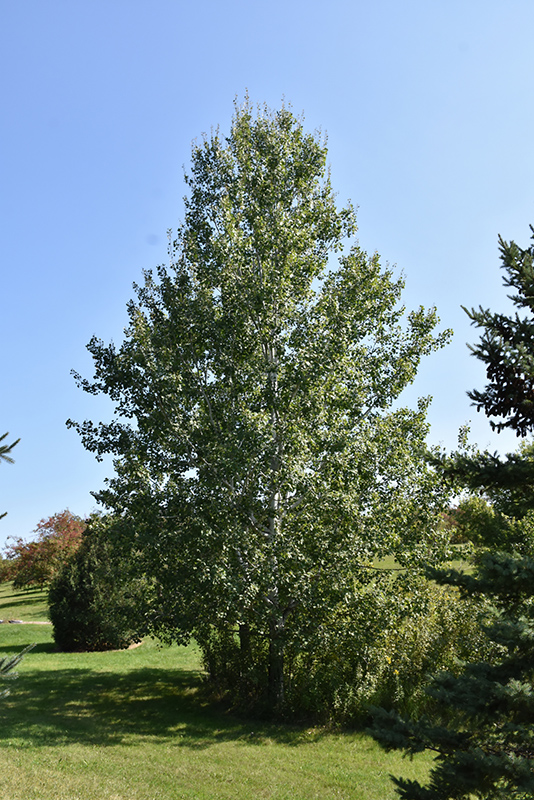Digging deeperPlant Library
Height: 40 feet
Spread: 30 feet
Sunlight:
![]()
![]()
Hardiness Zone: 3
Other Names: Quaking Aspen
Description:
A delicate native of the North American forest, with showy white bark and leaves that flutter in the faintest breeze; suckers vigorously, doesn't tolerate polluted conditions well, best left in a natural forest setting or a suburban woodland composition
Ornamental Features
Trembling Aspen has rich green deciduous foliage on a tree with an oval habit of growth. The round leaves turn an outstanding gold in the fall. However, the fruit can be messy in the landscape and may require occasional clean-up. The smooth white bark adds an interesting dimension to the landscape.
Landscape Attributes
Trembling Aspen is a deciduous tree with a shapely oval form. Its average texture blends into the landscape, but can be balanced by one or two finer or coarser trees or shrubs for an effective composition.
This is a high maintenance tree that will require regular care and upkeep, and is best pruned in late winter once the threat of extreme cold has passed. It is a good choice for attracting birds to your yard. Gardeners should be aware of the following characteristic(s) that may warrant special consideration;
- Messy
- Suckering
- Insects
- Disease
Trembling Aspen is recommended for the following landscape applications;
- Shade
- Naturalizing And Woodland Gardens
Planting & Growing
Trembling Aspen will grow to be about 40 feet tall at maturity, with a spread of 30 feet. It has a low canopy with a typical clearance of 5 feet from the ground, and should not be planted underneath power lines. It grows at a fast rate, and under ideal conditions can be expected to live for approximately 15 years.
This tree does best in full sun to partial shade. It prefers to grow in moist to wet soil, and will even tolerate some standing water. It is not particular as to soil type or pH. It is quite intolerant of urban pollution, therefore inner city or urban streetside plantings are best avoided. Consider applying a thick mulch around the root zone in winter to protect it in exposed locations or colder microclimates. This species is native to parts of North America.
Nursery Notes
Short lived tree - 12 to 15 years on average. Often plagued with disease and insect problems.
A NetPS Plant Finder tool
This Plant Library is for informational purposes only. We may or may not carry the items listed. During many times of the year, we may carry many more plants in our store than are listed in the Plant Library. Please contact us directly at 303-690-4722 or visit our store for current availability and for assistance.


